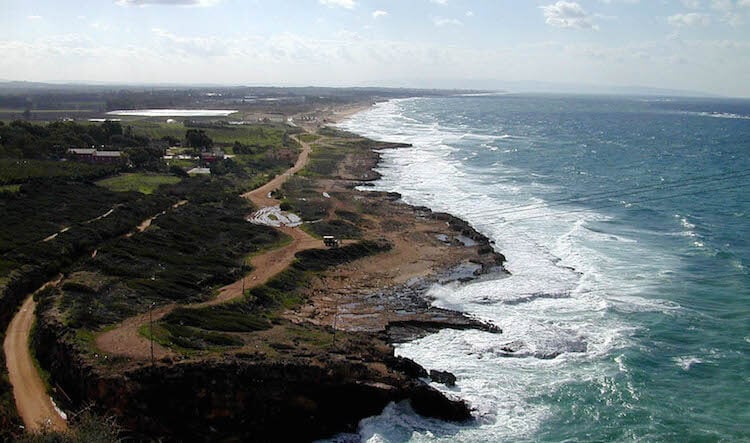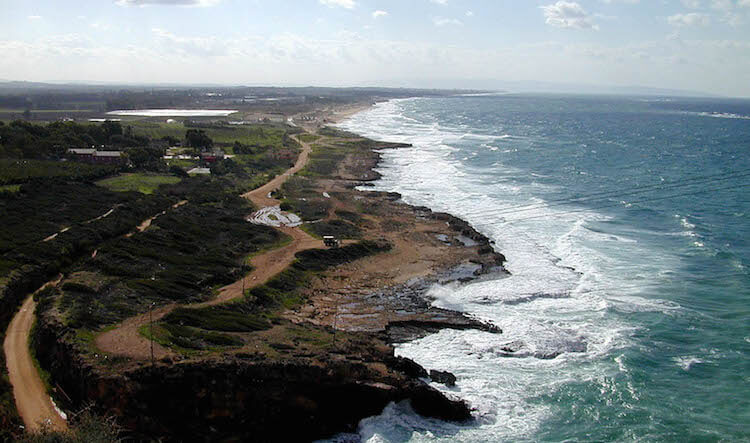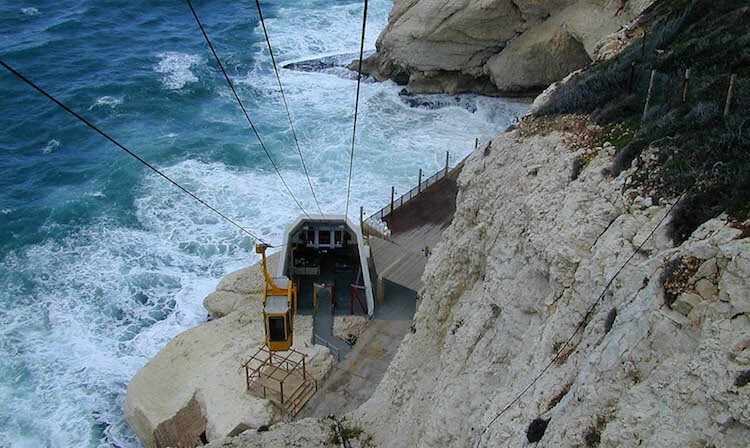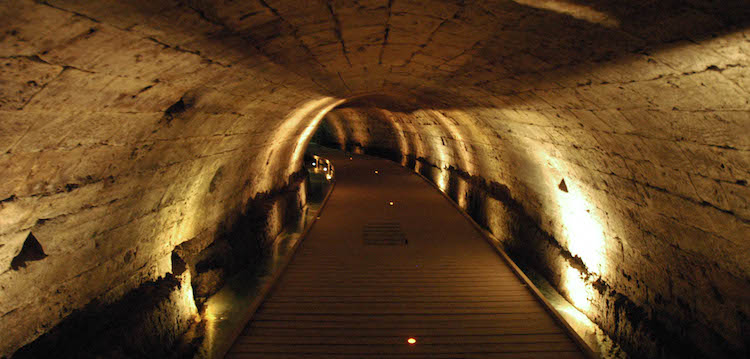
All tours to Israel have to prioritize the sites they see. However, after the “big rocks” get put in the jar, there isn’t much room in the itinerary for much else. But there’s so much more to see.

(Photo: Coast of Israel south of HaNikra. Courtesy of the Pictorial Library of Bible Lands)
Most pilgrims limit their seaside stops in Israel to Joppa and Caesarea along the coast. However, there are several seldom seen places by the Mediterranean coast—at Acco, Dor, and Rosh HaNikra—that offer visitors surprising benefits.
In addition to biblical history, these places offer beautiful scenery, stunning panoramas, and even a little fun.
Rosh HaNikra
Located in the heart of ancient Phoenicia, Rosh Hanikra rests by the border of Israel and Lebanon.
The site’s stark, white cliffs and lovely seascape are best enjoyed from the world’s steepest cable car ride that ascends 220 feet above the Mediterranean coast.

(Photo: Rosh HaNiqra cable car. Courtesy of the Pictorial Library of Bible Lands)
Visitors enjoy the natural wonder of massive grottos formed by millennia of pounding waves from the Mediterranean coast. A light-and-sound show gives a history of the site, and the “little train” provides a 40-minute tour, showing a railroad constructed during the British Mandate.
A lovely promenade overlooks the sea and follows the track of the old railroad. The waterfront has numerous inlets and pools, some bearing the quarry marks of the ancient Phoenicians.
Acco Crusader Castle and Templars Tunnel
Acco (modern Acre) was one of the cities the Tribe of Asher failed to control (Judges 1:31). The Apostle Paul’s ship arrived at Ptolemais (ancient Acco) and stayed here a day as he completed his third missionary journey (Acts 21:7).

(Photo: Acco and the Mediterranean Sea . Courtesy of the Pictorial Library of Bible Lands)
Because succeeding powers couldn’t demolish the Crusaders’ underground labyrinth of tunnels, many of the subterranean passageways remain for visitors to see.
- The Crusader castle, called the Fortress of the Knights Hospitallers, showcases some of the finest Crusader architecture in the Holy Land.
- The Templars’ Tunnel, ancient tower, kitchen, refectory, dormitory, “Hall of Knights,” and even the Turkish bath make this site fascinating.

(Photo: Acco Templars Tunnel. Courtesy of the Pictorial Library of Bible Lands)
Tel Dor and the Ancient Harbor
The Lord originally assigned Dor to the tribe of Manasseh, but Israel only ruled over it from King David’s day to the Assyrian invasion in 734 BC.
- The Phoenician influence at Dor was pervasive.
- A keen eye can make out three ancient boat slips hewn from solid rock in the central bay facing the Mediterranean coast. These slips offer the only visible evidence that ancient Dor was a significant harbor on east coast of the Mediterranean.
- A visit to Dor and its harbor today allows one to see remains of a Roman theater, a Roman warehouse, a Byzantine church, an 11th-century quay, a well-preserved purple dye factory, and numerous other finds within a museum that used to be a glass factory.

(Photo: The temples area at Dor. Courtesy of the Pictorial Library of Bible Lands)
True, you have to prioritize your first journey to Israel. But on another tour, these 3 sea sites on the Mediterranean coast are worth turning on your blinker.
Tell me what you think: Which of these sites would you like most to see—and why? To leave a comment, just click here.
Here are the sites on a modern map:
You’ll find these sites and more in a book I wrote for the Israel Ministry of Tourism, 100 Off-The-Beaten-Path Sites. You can download a free copy.
Click here to leave a comment.
-1.png?width=5230&height=1198&name=unnamed%20(4)-1.png)

.jpg?width=350&name=Wayne-books-350wide%20(1).jpg)




